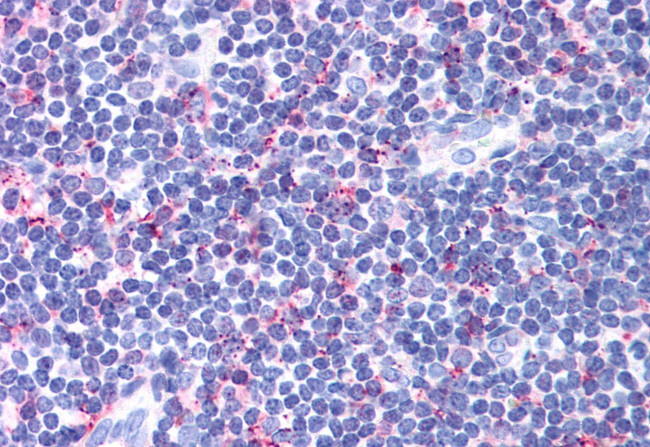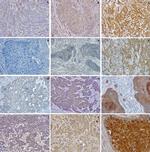Search Thermo Fisher Scientific
产品信息
PA5-32698
种属反应
已发表种属
宿主/亚型
分类
类型
抗原
偶联物
形式
浓度
纯化类型
保存液
内含物
保存条件
运输条件
RRID
产品详细信息
Percent identity with other species by BLAST analysis: Human, Gorilla, Gibbon, Monkey, Marmoset (100%); Ferret, Elephant, Panda (94%); Dog, Bovine, Bat, Hamster (89%); Mouse, Rat (83%).
For IHC(P), use heat induced antigen retrieval in pH 6.0 citrate buffer. After incubation with the primary antibody, slides were incubated with biotinylated secondary antibody, followed by alkaline phosphatase-streptavidin and chromogen.
靶标信息
CCR4 is a chemokine receptor and is preferentially expressed on type 2 helper T (Th2-type) cells. In contrast to other chemokine receptors, the expression of CCR4 and CCR8 on Th2 cells is transiently increased following TCR and CD28 engagement. Moreover, activated Th1 cells up-regulate CCR4 expression and functional responsiveness to thymus- and activation-regulated chemokine. Chemokines are a group of small (approximately 8 to 14 kD), mostly basic, structurally related molecules that regulate cell trafficking of various types of leukocytes through interactions with a subset of 7-transmembrane, G protein-coupled receptors. Chemokines also play fundamental roles in the development, homeostasis, and function of the immune system, and they have effects on cells of the central nervous system as well as on endothelial cells involved in angiogenesis or angiostasis. Chemokines are divided into 2 major subfamilies, CXC and CC, based on the arrangement of the first 2 of the 4 conserved cysteine residues; the 2 cysteines are separated by a single amino acid in CXC chemokines and are adjacent in CC chemokines.
仅用于科研。不用于诊断过程。未经明确授权不得转售。
生物信息学
蛋白别名: C-C chemokine receptor type 4; C-C CKR-4; CCR-4; CD194; chemokine (C-C motif) receptor 4; chemokine (C-C) receptor 4; K5-5; MGC88293
基因别名: CC-CKR-4; CCR4; CD194; ChemR13; CKR4; CMKBR4; HGCN:14099; K5-5
UniProt ID: (Human) P51679
Entrez Gene ID: (Human) 1233





